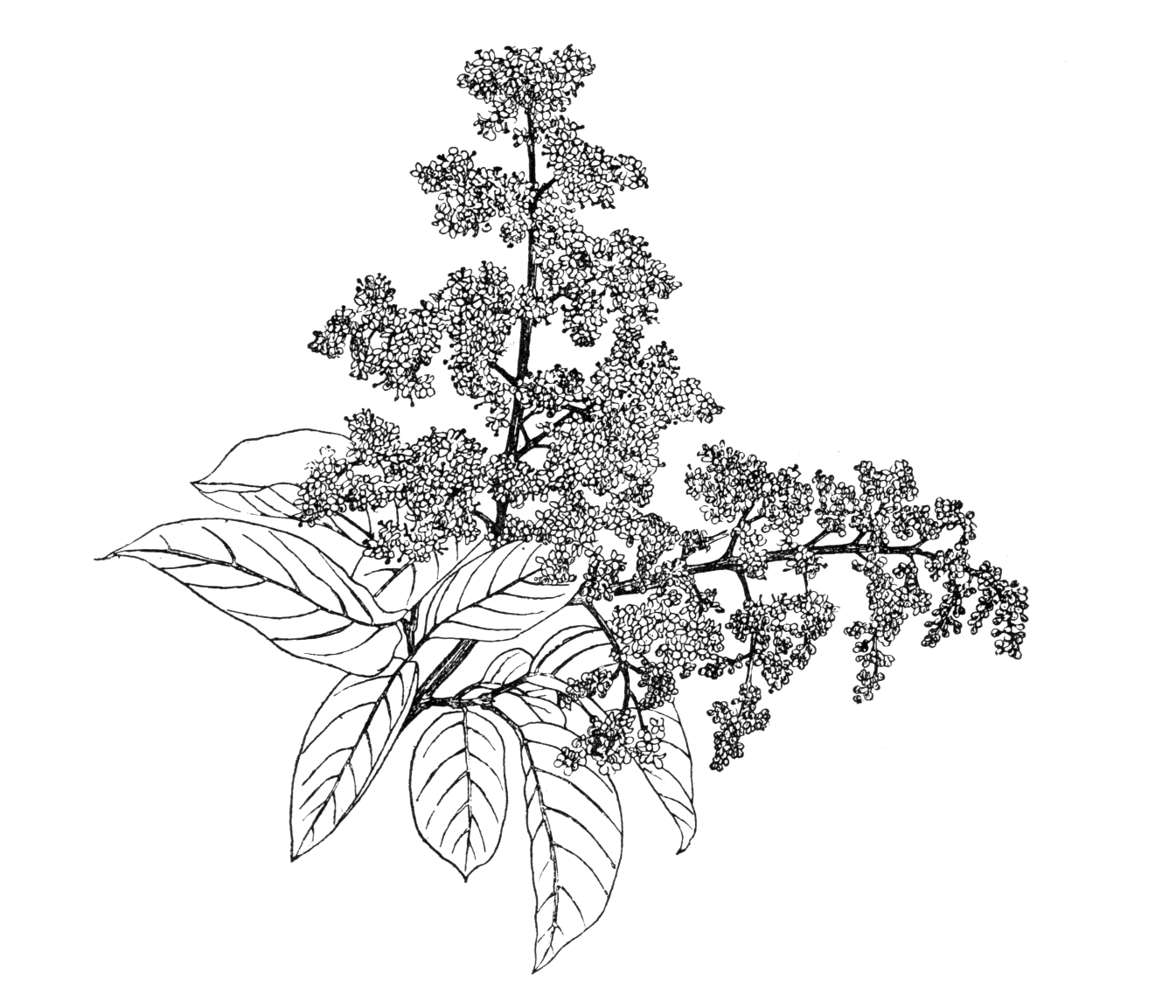Ligustrum japonicum
Credits
Article from Bean's Trees and Shrubs Hardy in the British Isles
Recommended citation
'Ligustrum japonicum' from the website Trees and Shrubs Online (treesandshrubsonline.
Genus
An evergreen shrub, rarely more than 6 to 12 ft high in this country, of bushy habit; twigs covered when young with minute dark down, becoming quite glabrous. Leaves glabrous, almost black-green, very glossy, ovate, 11⁄2 in. to 4 in. long, 3⁄4 to 2 in. wide, usually rounded, sometimes tapering at the base, taper-pointed at the apex; stalk 1⁄4 to 1⁄2 in. long. Flowers white, borne in terminal pyramidal panicles 4 to 8 in. high and as much wide; flower-stalks clothed with minute down. In bloom from July to September.
Native of N. China, Korea, Japan; introduced to Europe by Siebold in 1845. It is closely allied to L. lucidum, and much confused with it in gardens, but is a less vigorous shrub, its leaves are darker green, shorter, more rounded at the base, and the nerves beneath are raised, whereas in L. lucidum they are sunken; the corolla-tube is twice as long as the calyx and equal to the corolla-lobes in L. japonicum in contrast to equal to or slightly less than the lobes and the calyx in L. lucidum; furthermore the inflorescence is looser, and the young shoots minutely downy. It is a useful and effective evergreen because of the intensely dark shining foliage, but needs a sheltered spot.

